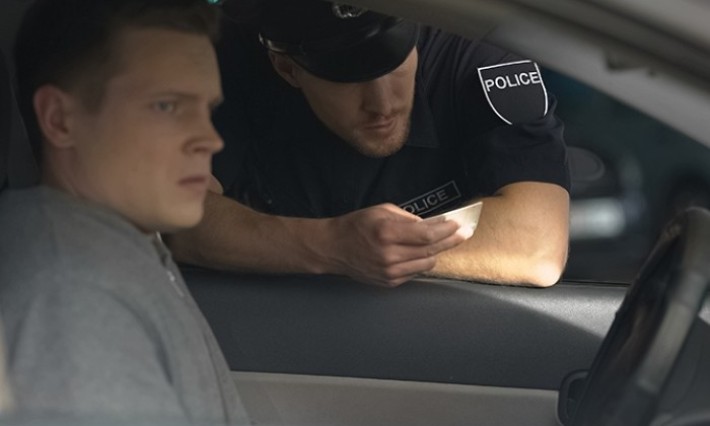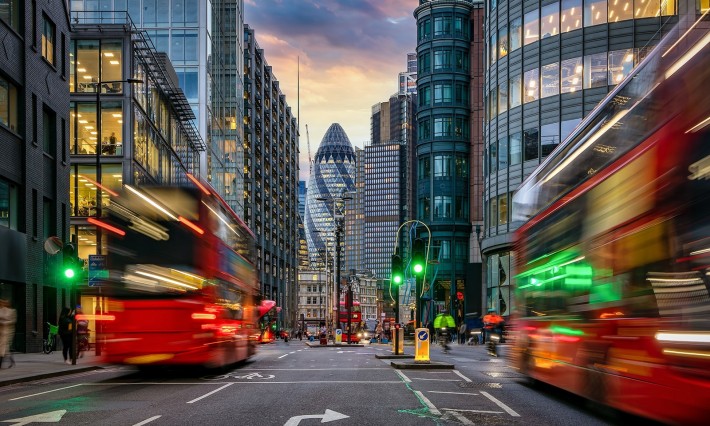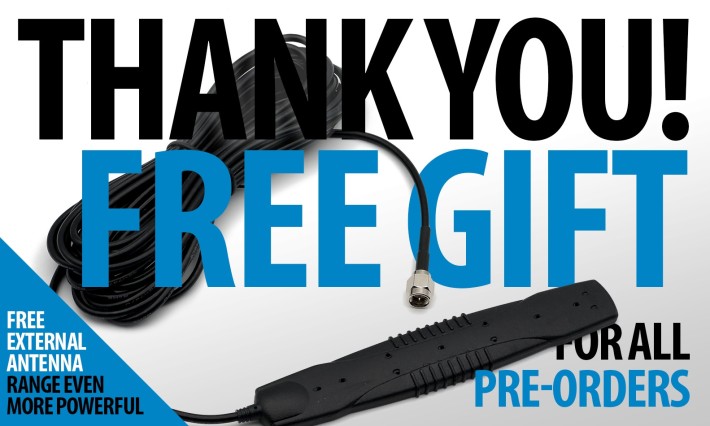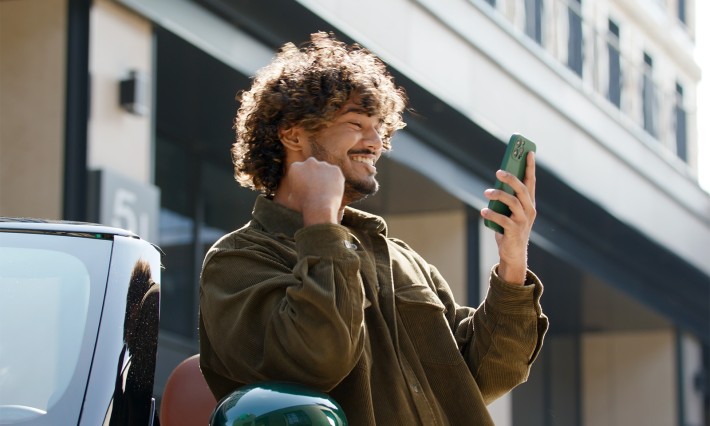My cart
You currently do not have any products in your cart.

Driving along the motorway and you see flashing blue lights in your rear-view mirror. Likely, your first thought is that you hope you haven’t been speeding or that you unintentionally violated traffic law. Your knee-jerk reaction is to pull over. Unfortunately, in the UK, fake undercover police, criminals pulling over unsuspecting victims, is a worrying trend. It can put you and your fellow passengers in immediate danger.
The fact remains, it's important to stop if a police officer signals you to pull over, but with undercover vehicles on the road, it’s easy for criminals to impersonate legitimate officers. Countless reports can be found online of vulnerable drivers that have found themselves in threatening situations. Take this experience for example, as was written in the Mirror:
“A driver is warning others to be on the lookout after she claims she was followed by a fake unmarked police car. Ebby Tremain says she was pursued by what she believes was a fake undercover policeman. Ms Tremain, from Mawgan, Cornwall, was travelling between Reduth and Helston when she saw a silver or blue Vauxhall in her rear view mirror. The car had flashing blue lights on its dashboard and she believed at first that it was an unmarked police car, reports Cornwall Live. But after pulling over, she was concerned by the man getting out of the car and decided to drive away. The driver followed her again but then turned off leaving Ms Tremain doubting if it was a real police officer or not. She added: "I spoke with the police who logged it. Stay safe."
A spokesman for Devon and Cornwall Police said: "Police were contacted by a member of the public reporting that an unmarked car with a flashing blue light attempted to get her to pull over near Helston, at around 7:30pm on January 29. The driver of the vehicle pulled over and one man, not wearing a police uniform walked towards the car. The member of public immediately drove off and was unharmed." He added: "If this happens to you, and you have reason to believe this is not a genuine police car, do not stop. Drive to your nearest police station or if you have a passenger or hands free please do not hesitate to call 999 and we can check if the police are actually behind you and wish you to stop."
https://www.mirror.co.uk/news/uk-news/female-motorists-warning-after-pulled-9734502
Officers do not need a reason to pull a car over; they have the right to stop any vehicle and demand to see the driver's documents (or have them presented at a police station within a specific time). Even if you’re sure that you’ve not knowingly committed an offence, that isn’t a factor when deciding if you should stop when being pulled over by the police.
Criminals impersonating police officers is naturally a growing concern. It is why it is more important than ever to provide drivers with a means to confirm their suspicions or not if the police vehicle is genuine or fake (and to stay on the right side of the law if they can't decide). With Target Blu Eye, drivers are alerted to all emergency service vehicles within a radius of 1,100 yards. Should you find yourself getting pulled over by a police car that is not registering on Target Blu Eye’s panel, that means it is not receiving the secure and authentic radio signals that emergency vehicles emit to communicate with eachother. Therefore drivers are alerted in advance that this is likely not an authentic police vehicle.
So what should a driver then do? If genuinely concerned, dial 999 and ask for the police. Your call will not be dismissed as a waste of time. The operator will be able to determine whether or not the stop is legitimate and what to do if it is not. If not, they will send officers to assist you.
The average driver can arm themselves with some basic knowledge to help them when it comes to identifying whether a marked or unmarked police car is authentic or not. Here are some tips from Pete Barden’s website:
https://www.petebarden.co.uk/news/articles/spot-fake-police-when-driving.html
If you find yourself in the position of being flashed by what appears to be an unmarked police car, the inclination is to pull over and stop. We have been taught to place our trust in those in positions of authority. However, what you might not know, is that if it’s an unmarked car, you don’t actually have to stop right there and then. Here’s some advice from Wiltshire Police about what to do if there is an unmarked police car following you and asking you to stop:
Sources:
https://graziadaily.co.uk/life/real-life/woman-tricked-pulling-men-fake-police-car-wiltshire/
https://www.petebarden.co.uk/news/articles/spot-fake-police-when-driving.html
Drivers who find themselves in a dangerous situation such as encountering fake police officers, are exempted from the harsh penalties of six penalty points and a £200 fine for using a cellphone while driving, especially if it is an emergency, risky or impossible to stop.
Drivers that attempt to use this defence fraudulently are likely to face harsh consequences.
Should you see that the vehicle pulling you over is a fully adorned police car, it is almost certain to be genuine. Getting their hands on a completely marked vehicle would be costly, and criminals would be more likely to be detected by the actual authorities. These criminals are more likely to disguise themselves as undercover cops in modern vehicles. Rather than a lemon like an old Ford Focus, you could better expect a new Ford Mondeo with headlights blazing in your rearview mirror. Furthermore, criminals pulling over unsuspecting drivers is more likely to happen in the night, when it is more difficult to identify the police vehicle make, model, or markings.
It is possible to drive and keep an eye out for vehicles that may be unmarked police vehicles, though it can be a rather daunting task and can be distracting. The most popular undercover police vehicles in the UK are:
If you’re not a car aficionado or do not use an app or even Target Blu Eye in your vehicle but still want to be able to recognise unmarked police cars, there are other ways to do so. Keep in mind, the road is often hectic enough without having to attempt to spot unmarked emergency vehicles, which is why Target Blu Eye is such an ideal solution; drivers can maintain focus on the road. Here are six different ways how you can recognise unmarked police cars:
Police vehicles are expected to be flawless. While this isn't foolproof because after driving all day their car can still get dirty, an unusually clean but normal-looking car could be a sign.
Police vehicles, marked or unmarked will never use personalized private number plates. Furthermore, in some areas, they will all start with same code at the front as they'll have been bought from the same place.
Because undercover police seldom drive alone, the presence of two persons in the car could help you recognise an undercover police car.
These are excellent features to be aware of as police use a variety of computers which naturally generate a tremendous deal of light at night. It will also be easy to spot black equipment hanging beneath the rearview mirror or peeking over the dash during the day.
We have all been guilty of this at one point or another, saying that all Audi drivers tailgate or that all BMW drivers weave through traffic, for example. Of course, these are stereotypes. Expect that police vehicles will display exemplary driving behaviour. While not an ironclad way to identify an unmarked police car, if the BMW or Audi is driving cautiously and obeying the rules of the road, this could suggest that they could be undercover vehicles.
These may easily be mistaken for anti-collision technology grill panels, however they are usually glossy. These are most likely police lights if you notice matt grey panels.
Keeping an eye out for potential unmarked police vehicles can be quite a daunting task and could be distracting from safe operation of your vehicle. It is what Target Blu Eye the perfect solution for drivers that take their road safety seriously. While being a sober and aware driver, conscious of your surroundings and the cars around you, is one thing, even the best of us miss things in our peripheral sight or blind spots.
Sound insulation in modern cars, plus the popularity of powerful Hi-Fi systems, means that many drivers now don’t hear sirens in time to move out of the way. The best way to identify marked or unmarked police cars is using a Target Blu Eye.
With Target Blu Eye, identifying emergency vehicles in your surroundings is made easy. While some drivers use apps to help them get a better understanding of what is happening on the road around them, they do not alert drivers to the presence of unseen emergency vehicles or unmarked police vehicles. The audio and visual signals that Target Blu Eye emits are much harder to miss.
Something all emergency vehicles have in common is that they communicate using a TETRA radio. TETRA stands for Terrestrial Trunked Radio and is a digital standard for radio communication used by almost all emergency services in Europe. In the UK, the TETRA network for emergency services is called Airwave.
Target Blu Eye monitors the frequencies of emergency services’ TETRA and Airwave radios and listens for the distinctive periodic pulses sent by the radios with intervals of a few seconds. These could be emitted by marked or unmarked vehicles, by radios worn by beat officers, or even mobile speed camera operators. When the pulse is detected, the driver is alerted. Based on the sensitivity setting, it can detect any emergency services radio within 800 yards. This even happens when the Airwave radios are on standby only and not being used for communication (speech). This enables drivers to become aware of the emergency vehicles with forenotice. Near a hospital for example, the panel will pick up greater activity. Out on the motorway, it can give ample warning of a police car approaching, even one on the opposite carriageway.
Does Target Blu Eye alert of other emergency vehicles too?
Target Blu Eye does not differentiate between emergency vehicles, including both marked and unmarked police cars, because they use the same TETRA/Airwave protocol to communicate with each other. Therefore Blu Eye also alerts drivers of ambulances, fire engines, motorcycles, HGVs, Highway Agency vehicles, and other emergency service vehicles, regardless of whether they are on Blue lights and sirens.
The most effective way to inform yourself definitively if a police vehicle that is pulling you over is authentic or not is to have Target Blu Eye installed in your vehicle. With technology that alerts drivers of authentic emergency vehicles that you share the road with, drivers that use Target Blu Eye can rest assured knowing that they will safely get to where they are going, despite the best efforts of criminals preying on unsuspecting drivers, banking on people that respect the police and will pull over, inadvertently putting themselves in a dangerous situation. Target Blu Eye is always on and protecting its passengers.

We’re excited to announce the official Blu Eye UK website for customers in England, Scotland and Wales: blu-eye.co.uk. Ordering through the UK site means local stock, faster shipping and local warranty handling, making it easier than ever to purchase and support Blu Eye across the United Kingdom.
Read on

Everyone who has pre-ordered the Blu Eye GO will receive the optional external antenna free of charge with delivery in November. This also applies to everyone who places an order before 19 September.
Read on

Over the past two months, you’ve been able to benefit from a 20% discount on this compact, portable system built on the proven platform of the renowned Blu Eye 2. Interest has been huge and the response overwhelming.
Read on